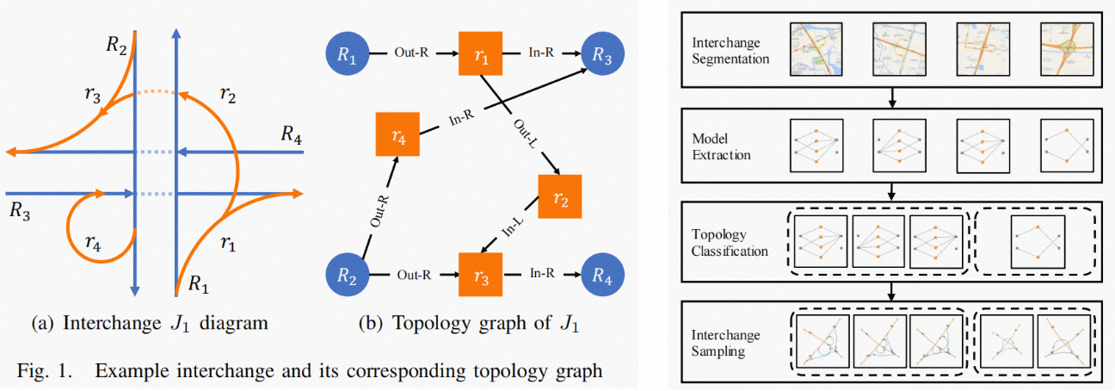Page Not Found
Page not found. Your pixels are in another canvas.
A list of all the posts and pages found on the site. For you robots out there is an XML version available for digesting as well.
Page not found. Your pixels are in another canvas.
About me
We apply labeled digraph to model interchange typologies.
Given an interchange J with n one-way roads and m ramps, its topology model, denoted as GJ = ⟨V, E, T, f⟩. The labels denote how a ramp connects to a road or another ramp. Hence, we have four labels: T = {Out-R, Out-L, In-R, In-L}, where Out-R (resp., Out-L) means the ramp leaves a road/ramp on its right (resp., left), and In-R (resp., In-L) means the ramp merges into a road/ramp from its right (resp., left).
For example, Fig. 1(b) presents the topology model of the interchange J1 (Fig. 1(a)). 
This is a page not in th emain menu
Short description of portfolio item number 2 
Published:
We’ve generated test scenarios based on the geometry and topology information extracted from the HD maps, either without or with dynamic obstacles.
Published:
We focus on the city-driving scenarios and as mentioned previously, there are two main elements: roads and junctions.
Published:
After we have the models for roads and junctions, the next step is to find out where to construct the junctions and how to connect them, such that the junctions are connected as much as they can and there are no overlaps of the roads.
Published:
This is a sample blog post. Lorem ipsum I can’t remember the rest of lorem ipsum and don’t have an internet connection right now. Testing testing testing this blog post. Blog posts are cool.
Published:
We focus on the city-driving scenarios and as mentioned previously, there are two main elements: roads and junctions.
Published:
As mentioned earlier, each route contians two roads and one junction.
Published:
The first step to testing scenarios generation is to construct the road networks where all the traffic participants (e.g. EGO vehicle, NPC vehicles, pedestrians etc.) move.